While looking over my pictures the other day (yes, I am working on posting some more but have encountered some difficulty) my sister-in-law noticed the "no horn" sign and jokingly said "no trumpets?" And only then did I realize the depth of the silence I have been enjoying since my return.
Traffic, you see, does not exist in the US. Even in New York I was cheerfully surprised by the lack of people cutting each other off, the existence and use of lanes, and the lack of horns. I can't say I've noticed hearing even one since my return.
In India, driving is a hazard to be sure. The roads (a term sometimes used loosely) are facing the right direction (most of the time) according to the British influence which dictates that one drive on the left, rather than the "right" side of the road. But the organization seems to end there. There are no lanes, but rather a sense that one must squeeze into any space wide enough (or close thereto) for your vehicle. Cars, therefor have their side-view mirrors folded in so as to make easy the squeezing. Rickshaws have a much easier time, since they are so narrow, and with bikes and cows included, sometimes what might only have appeared as two or three lanes has six or more "vehicles" waiting in line for a red light. That is, when the street lights are in use, or when the drivers choose to follow the suggestions of the red, yellow, and green.
The horns, though, are used for many reasons. Most trucks, buses, and auto-rickshaws actually have painted on the back of their vehicle "horn please," asking nicely for others to indicate that they'll be passing with a toot of the horn. The sound can also mean "get out of my way," "you're an animal and I think my destination is more important than yours," or "what the hell?" Whatever the message the noise is trying to convey, there are always horns. They ring in your ear after a long bus ride and resonate in your brain as you try to sleep over a busy city street. I don't know if I ever got used to the noise, but I am certainly excited about its absence here in Colorado. Peace and quiet ("I'll be quiet." ... "And I'll be peace!")
There are movements to improve the safety, though. Some of the following phrases were seen on signs (mostly in Chennai and Mumbai) promoting safe driving:
"Don't rush ... unless you have an appointment with god."
"Speed thrills, words kill ... avoid talking on your cell phone while driving."
"Good things come to those who wait ... follow traffic signals at all times."
Is it working? I don't know. I didn't witness too many accidents, though more than I would have liked. Two friends of mine were thrown from their cycle-rickshaw when it collided with another vehicle in the crowded streets of Varanasi. Our bus was rear-ended after slamming on the breaks to avoid a collision after being cut off by a truck on an open highway (no, none of us were hurt). We drove by an overturned auto (cars in India are generally very small, about the size of a Ford Focus (or smaller)) on the highway returning from Agra. The "speed bumps" are often ignored, as is the speed limit, so fences are often placed in the street which require all vehicles to zig-zag around the blockade (a bit more difficult with a bus than with a cow, I imagine). Anyway, driving in India is tough, and not something I ever want to try. I am thankful to those who got me where I needed to go safely -- that's for sure!
A driver in Varanasi told me that you need three things to drive in India: A good horn, good brakes, and good luck! How right you are, sir, how right you are.
Subscribe to:
Post Comments (Atom)




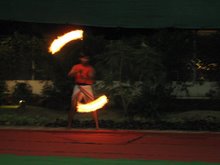




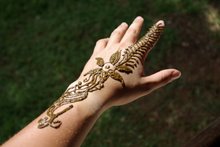

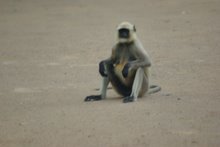

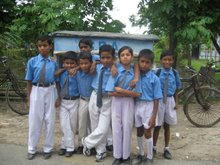
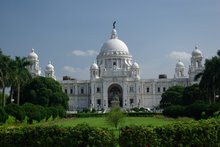
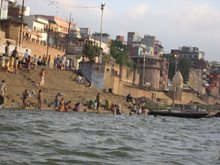

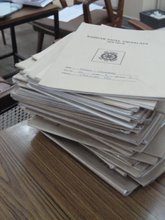
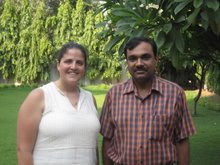
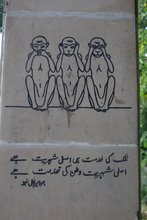
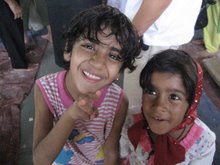

No comments:
Post a Comment